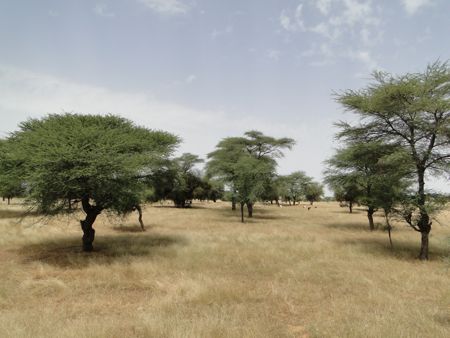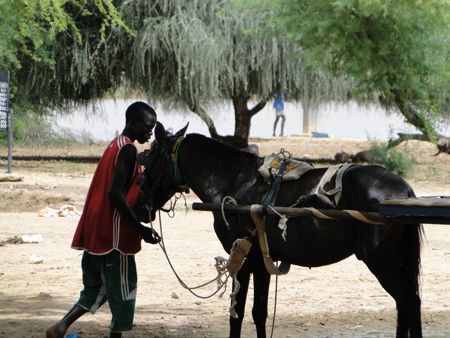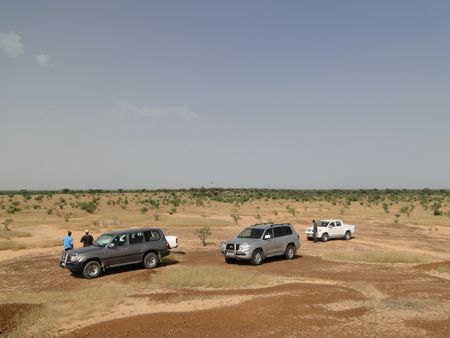Grasslands of the Sahel

We left the colonial city of Saint Louis in the early hours of morning, passing blue-uniformed school kids and shopkeepers washing down their front steps. Putting the town behind us we crossed the river to the mainland, and spent the rest of the day traveling along the broad arch of the Senegal River along a track that led us eastward, deep into Africa's Sahel. I'd approached this gorgeous region once before from northern Benin, but this time, it was different.
At the tail end of the rainy season the Sahel was verdant and lush, and the hillsides were carpeted in a soft patina of tall, tufted grass that rolled in waves towards the horizon. A rash of stubby acacia trees dotted the landscape, dark compound leaves thrust against the bright sky; underneath them, pooled in the shadows, lazed the goats and sheep that made up the local economy.
Here and there we came upon a village of earthen homes, like sugar-cube blocks the color of fresh clay set amongst the trees, seeming the less permanent of the two, the twin minarets of a mosque peering from behind a copse of trees, easily the centerpiece of the village. The valleys were dry, but yellow and red slashes in the earth disclosed where the water had run just weeks ago, and run violently, if the eroded gulleys were any indication. It was hard to imagine such water in a place where rain falls so infrequently.
The temperature rose as we advanced; by noon the glare overhead bleached the
hillsides and sent the goats underneath the shade of the acacias. As the
Indonesians liked to say, no one budges during the heat of midday but mad
dogs and Englishmen. My thermometer showed mid-30s by mid-morning and 40
degrees by mid-afternoon.

We stopped for lunch at an auberge near the village of Gamadji, where I noticed for the first time the Senegal River had been just behind the trees the whole length of our trip. But I gazed down the throat of the well to see the water table far, far below me; the water surface shone like a tiny mirror alongside an iron-run ladder that took my breath away. Do the people fish much around here? I asked. Not really, came the quiet reply. The people prefer their sheep. Beyond the road that led us into Senegal's hinterland, and the river at the edge of the Sahel, lie the Islamic Republic of Mauritania. But what was distant and forbidding on the map was just another hillside before us, and more grassland and acacias pressing against the broad, African sky - not so forbidding after all. Later we descended to the river's edge, where the local ferry was beached on mudflats for repairs, and the locals made do with wooden pirogues, the inevitable lowest common denominator for water transport in West Africa.
As usual, my penchant was to extoll the simplicity of village life, the comfort of routine and the order that traditions provide. But the Sahelians struggle more than most to make ends meet, and their lives aren't easy. In one village I spotted a young woman who had been brought to the village edge, prostrate beside a bottle of water provided for her. I presumed she was recovering from some illness at a distance the others deemed safe. And besides, these are not the remote, cultural outposts the foreigner would like to make them: I had a 3G internet the whole time we traversed the route, and had I been a Peace Corps volunteer in one of these villages, I could have surfed the web from my cell phone (a far cry from the lifestyle I lived only a decade ago in northern Nicaragua). Such is progress.
Next stop, of course, is the desert, somewhere, somehow. The Sahel charms
me each time with its broad sky, the imposed austerity. It's reasonable to
expect the desert itself will impress even more dramatically.

Trackbacks
The author does not allow comments to this entry

Comments
Display comments as Linear | Threaded